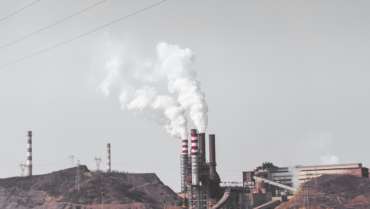In the song “This Is the Air I Breathe,” originally written by American worship leader and songwriter Marie Barnett, we find a powerful connection between our very existence and the air we inhale. The lyrics evoke a profound appreciation for the life-giving essence of clean, pure air. This sentiment resonates deeply with the current state of air quality in modern times, where the need for clean air has become increasingly urgent.
The song’s message serves as a reminder of the intrinsic value of clean air to our overall well-being. Just as the lyrics express a dependency on the air we breathe for sustenance, so too do we rely on clean air for our health and vitality. Breathing in fresh, uncontaminated air is not only a physiological necessity but also an essential component of our mental and emotional well-being.
Air quality, a vital component of our overall well-being, has undergone significant changes throughout history. From the industrial revolution to the present day, the impact of human activities on the environment has brought about alarming consequences for our air quality. This article aims to shed light on the current state of air quality and its profound implications for human health and the environment.
Looking back, the industrial revolution marked a turning point in human civilization, with rapid industrialization and urbanization leading to the release of harmful pollutants into the air. Factories spewed black smoke, and coal-burning was widespread, causing notorious smog episodes in cities such as London in the mid-20th century. These incidents served as wake-up calls, prompting the implementation of air quality regulations and the development of cleaner technologies.
However, the challenges persist in modern times. Urbanization, population growth, and the expansion of industrial activities have resulted in increased pollution levels worldwide. The combustion of fossil fuels, emissions from vehicles, and industrial processes release a plethora of pollutants into the atmosphere, including particulate matter, nitrogen oxides, sulfur dioxide, and volatile organic compounds. These pollutants have far-reaching consequences, impacting both human health and the environment.
The adverse effects of poor air quality on human health are well-documented. Particulate matter, especially fine particles known as PM2.5, can penetrate deep into the lungs and enter the bloodstream, leading to respiratory problems, cardiovascular diseases, and even premature death. Ground-level ozone, a key component of smog, can trigger asthma attacks, cause respiratory inflammation, and impair lung function. Long-term exposure to air pollution has also been linked to an increased risk of lung cancer, stroke, and other chronic diseases.
Moreover, air pollution extends beyond human health concerns. It poses a threat to ecosystems, impacting biodiversity, agricultural productivity, and the overall balance of nature. Acid rain, resulting from the interaction of pollutants with water in the atmosphere, harms forests, lakes, and aquatic life. Pollutants can also contribute to the formation of harmful algal blooms, impairing water quality and threatening marine ecosystems.
Meaningful examples of the consequences of poor air quality abound in our daily lives. Urban areas grappling with smog-filled skies, where breathing becomes a challenge and visibility is reduced to a haze, serve as stark reminders of the urgency to address this issue. Communities located near industrial facilities often face disproportionate exposure to toxic emissions, leading to environmental injustice and health disparities. Devastating wildfires fueled by a changing climate release enormous amounts of smoke and pollutants, further exacerbating air quality concerns.
Efforts to combat air pollution have made significant strides, with governments, organizations, and individuals working to reduce emissions and adopt cleaner technologies. Renewable energy sources, electric vehicles, and stricter emissions standards for industries are among the solutions being implemented. International agreements, such as the Paris Agreement, aim to limit global warming and mitigate the impacts of climate change, which in turn can improve air quality.
To create a future with cleaner air, a collective effort is required. Individuals can contribute by adopting sustainable practices, such as reducing vehicle emissions, conserving energy, and supporting clean energy initiatives. Governments and policymakers must enforce regulations, invest in renewable energy, and prioritize air quality in urban planning. Collaboration between nations is crucial, as air pollution knows no borders, and its impacts are felt globally.
The state of air quality in modern times presents a significant challenge to human health and the environment. From historical episodes of smog to the ongoing struggle against pollutants, we must recognize the urgent need for action. By addressing the root causes of air pollution, adopting sustainable practices, and working together at local, national, and international levels, we can breathe new life into our planet and create a healthier future for generations to come.

